Last updated on
Discover the magic of a hidden pantry door as we guide you through innovative design ideas and practical tips for incorporating this secret storage solution into your home.
Have you ever wanted to add a touch of mystery and intrigue to your home decor? A hidden pantry door might just be the perfect addition! Not only does it provide a unique and unexpected design element, but it also adds practicality by utilizing space that would otherwise go unused. In this article, we will explore the different types of hidden pantry doors available and how you can incorporate them into your own home.
So let’s get started on this exciting journey of secret passageways and clever storage solutions!
Key takeaways:
- Hidden pantry doors provide both style and practicality.
- Types include bookcase-style, sliding, mirror-door, and pocket doors.
- Benefits include maximizing space, added security, and increased home value.
- Consider design, materials, and functionality when customizing a hidden pantry door.
- Budget-friendly options and customization ideas are available.
What Is a Hidden Pantry Door?

It’s an innovative way of adding storage space without compromising on style and aesthetics. Hidden pantry doors are designed to be discreet and unobtrusive, giving you easy access to your food items while keeping them out of sight from guests or visitors.
These doors can be customized in various ways depending on the design scheme of your home. They come in different styles such as sliding barn doors, bookcase-style swinging doors, pocket-style sliding panels among others.
The beauty of a hidden pantry door lies not only in its functionality but also its ability to add character and charm to any room it’s installed in. Whether you’re looking for a modern twist or something more traditional, there is always an option that will suit your taste.
Types of Hidden Pantry Doors
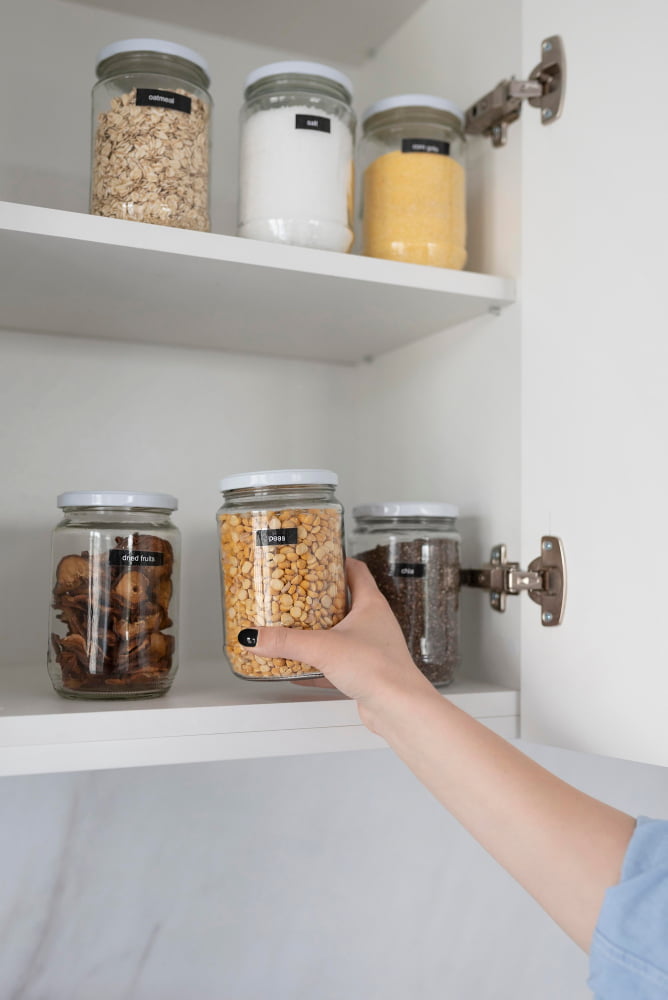
One popular option is the bookcase-style door, which blends in seamlessly with your existing bookshelves and can be opened by pulling on a specific book or pressing a button. Another type is the sliding door, which can be concealed behind a wall or cabinet and slides open when needed.
A third option is the mirror-door design that doubles as both storage space and an accent piece for your home decor. A fourth choice would be pocket doors that slide into walls when not in use.
No matter what type of hidden pantry door you choose, make sure it fits well with your overall design aesthetic while also providing practicality for everyday use.
Benefits of Hidden Pantry Doors
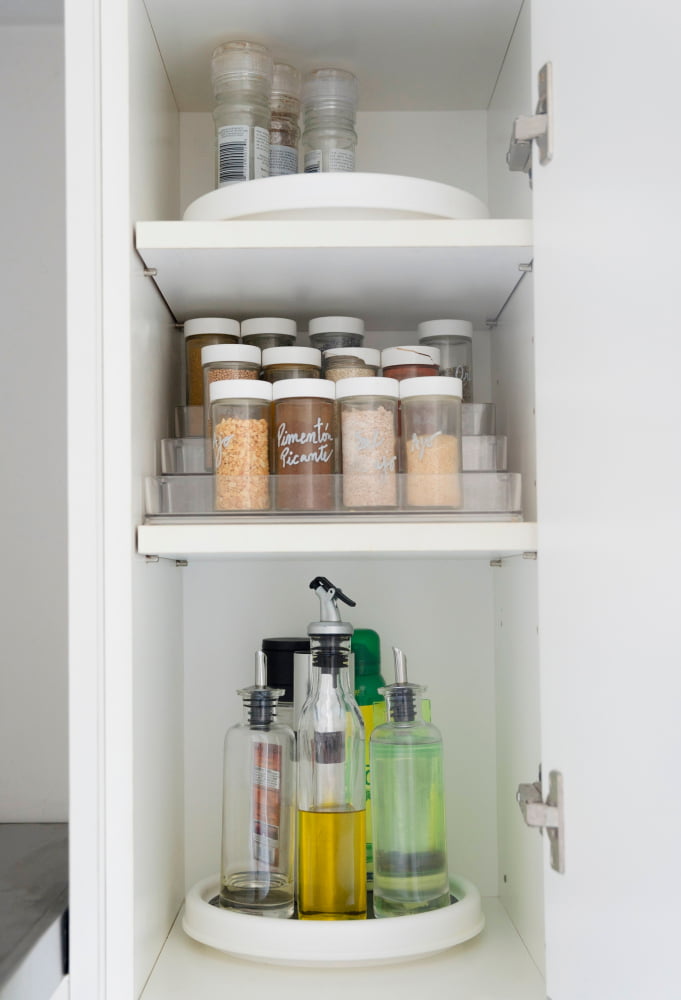
One of the most significant advantages is their ability to maximize space in your kitchen or pantry area. With a hidden door, you can utilize every inch of available wall space for storage without sacrificing style or functionality.
Another benefit is the added security and privacy they provide. A hidden door can be designed with locking mechanisms that keep your food items safe from prying eyes and curious children while maintaining easy access for adults.
In terms of aesthetics, hidden pantry doors add an element of surprise and intrigue to any room they are installed in. They create a sense of mystery as guests wonder what lies behind the seemingly ordinary wall paneling.
Installing a hidden pantry door can increase the value and appeal of your home if you ever decide to sell it in the future. Potential buyers will appreciate this unique feature as it adds both practicality and charm to their new living space.
Designing Your Hidden Pantry Door
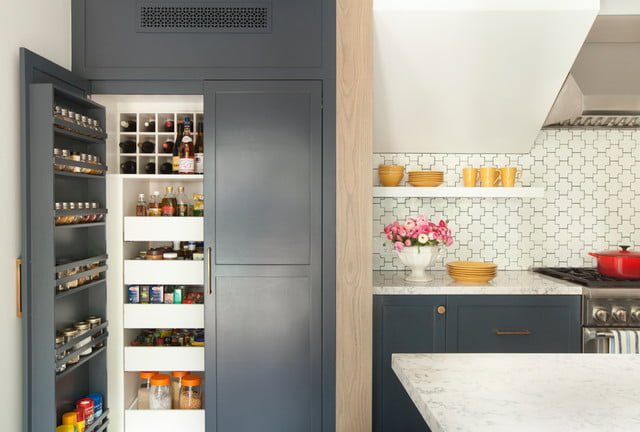
First and foremost is the location of the door. You want to ensure that it is easily accessible from your kitchen or dining area but also discreet enough not to be immediately noticeable.
Next, you’ll need to decide on a design style that complements your existing decor. Whether you prefer a rustic barn-style door or something more modern and sleek, there are plenty of options available.
Another important consideration is material selection. Wood doors offer warmth and character while metal doors provide durability and an industrial feel.
Glass panels can add elegance but may require additional maintenance.
Think about how you want your hidden pantry door to function – will it swing open like a traditional hinged door or slide smoothly along tracks? Will it have handles or push-to-open mechanisms?.
Material Selection for Hidden Pantry Doors

The first is durability. Since a hidden pantry door will be used frequently, you want to choose materials that can withstand wear and tear over time.
Solid wood or engineered wood are popular choices due to their strength and longevity.
Another important factor is aesthetics. You want your hidden pantry door to blend seamlessly with the rest of your home decor while still maintaining its unique design element.
Consider using materials such as glass or metal accents for a modern look, or opt for traditional wooden panels if you prefer a more classic style.
Cost is also an important consideration when choosing materials for your hidden pantry door project. While solid wood may be more expensive than other options like MDF (medium-density fiberboard), it offers greater durability and aesthetic appeal in the long run.
Popular Hidden Pantry Door Styles
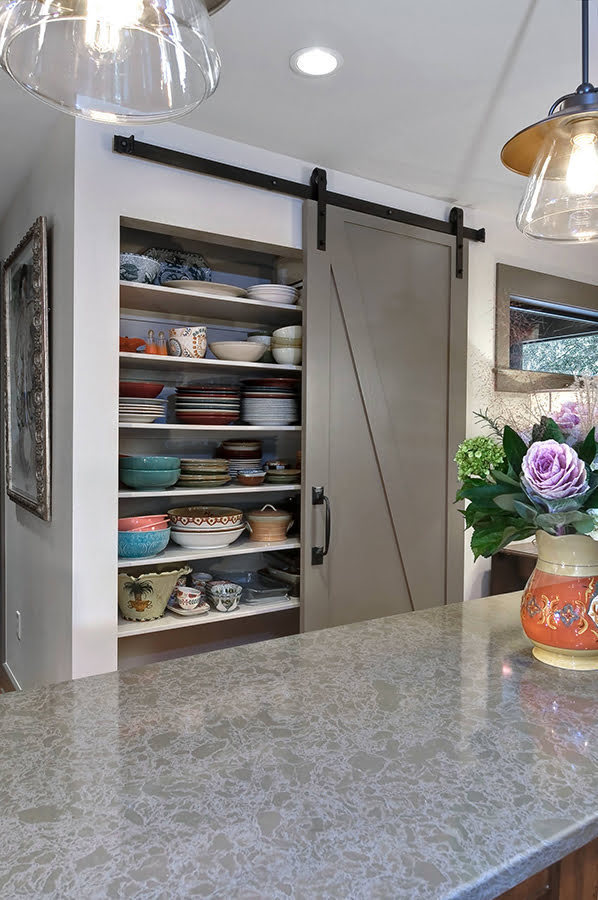
One popular option is the bookcase-style door, which blends seamlessly into your existing library or living room decor. Another stylish choice is the sliding barn door style, which adds rustic charm and character to any kitchen or dining area.
For those who prefer a more modern look, sleek and minimalist designs like flush-mounted doors can be an excellent choice. These types of hidden pantry doors blend in with surrounding walls for a seamless appearance that won’t detract from other design elements in your home.
No matter what style you choose for your hidden pantry door project, make sure it complements the overall aesthetic of your home while also providing practical storage solutions.
DIY Hidden Pantry Door Guide
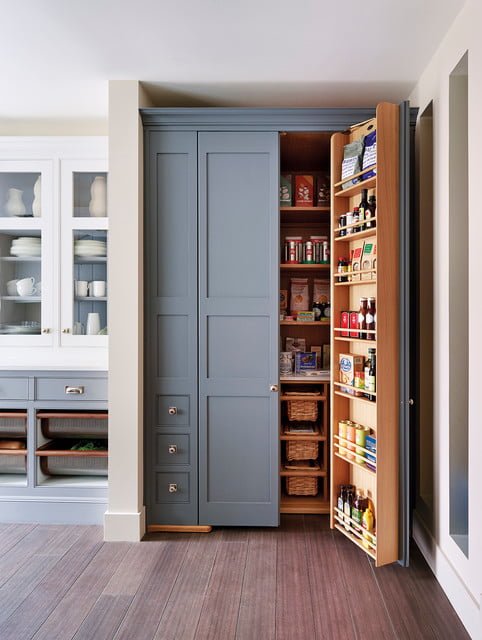
With the right tools, materials, and instructions, anyone can create their own secret storage solution.
Firstly, decide on the type of hidden pantry door that best suits your needs. Do you want it to swing open or slide? Will it blend in with the surrounding walls or stand out as a statement piece? Once you have decided on these details, gather all necessary materials such as wood panels for framing and hinges for swinging doors.
Next up is measuring – this step is crucial! Measure twice (or even three times) before cutting any material. You don’t want to end up with an ill-fitting door that doesn’t close properly.
Once everything has been measured correctly cut all pieces according to plan using appropriate saws like jigsaws or circular saws depending upon what kind of cuts are required. After cutting comes assembly time; assemble each part carefully following instructions from online tutorials if needed until they fit together perfectly without any gaps between them.
Finally install hardware like hinges which will allow movement when opening/closing while also providing stability during use over time!
Building a Hidden Pantry Door
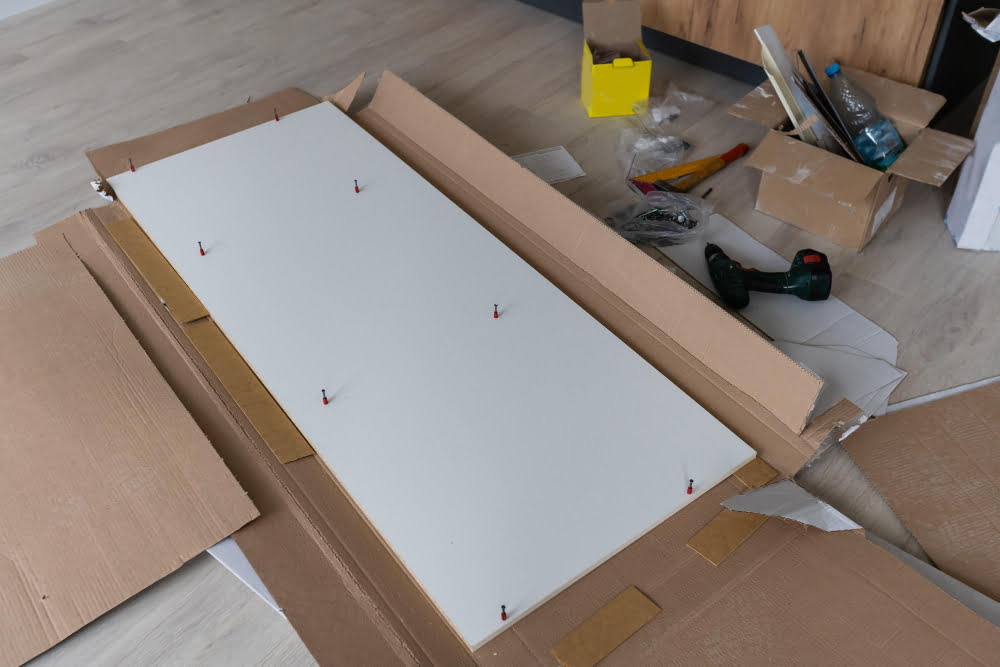
If you are handy with tools and have experience in carpentry, then building your own hidden pantry door can be an exciting DIY project. The first step is to determine the type of hidden pantry door that will work best for your space and needs.
Once you have decided on the design, gather all necessary materials such as wood panels or metal sheets depending on what material you prefer.
Next, take accurate measurements of the doorway where the hidden pantry door will be installed. This ensures that your finished product fits perfectly into its designated space without any gaps or misalignments.
After cutting out all required pieces according to specifications from your chosen material using appropriate tools like saws and drills; assemble them together using screws or nails while ensuring they are properly aligned before attaching hinges for easy opening/closing access.
Install any additional features such as locks if desired before painting/staining/sealing surfaces appropriately based on preference – this helps protect against moisture damage over time while also enhancing overall aesthetics!.
Measuring and Installing a Hidden Pantry Door

Measuring accurately is crucial to ensure that your door fits perfectly into the space provided. Start by measuring the height and width of your doorway or opening where you plan to install the hidden pantry door.
Next, consider how much clearance space you will need around the edges of your hidden pantry door. This will depend on whether you are using a swinging or sliding mechanism for opening and closing.
When installing a swinging mechanism, make sure there is enough room for both sides of the door frame as well as any hardware needed such as hinges or handles. For sliding mechanisms, measure carefully so that there is enough clearance between walls and other obstacles in order for smooth operation.
Follow manufacturer instructions closely when installing any hardware components such as tracks or brackets necessary to support weight distribution during use over time.
Installation Tips and Tricks
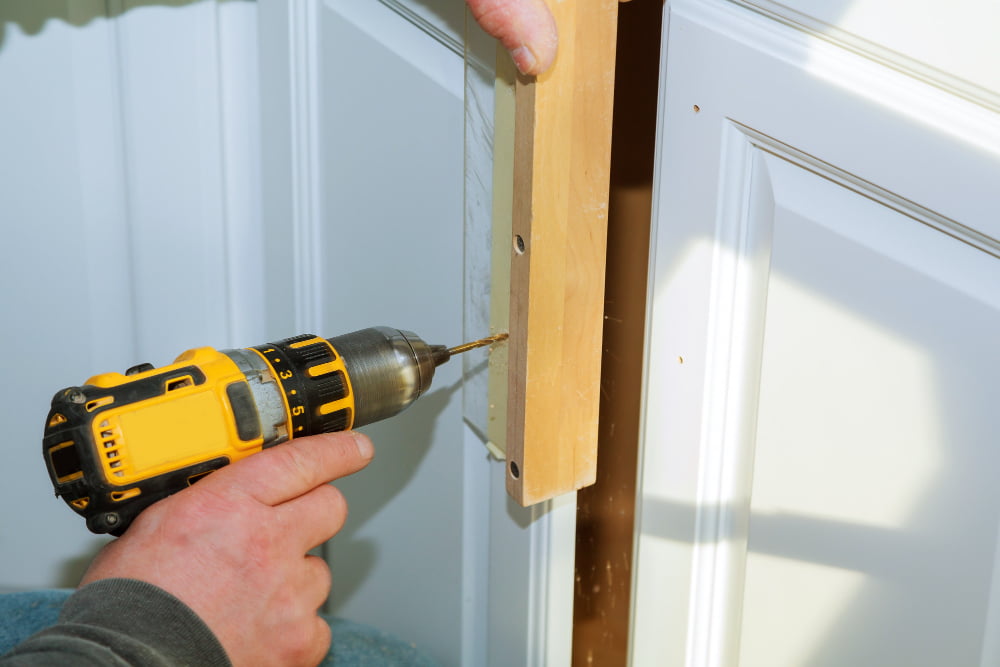
While installation may seem daunting at first, with a few tips and tricks, you can easily complete this project on your own.
Firstly, ensure that the area where you plan to install the hidden pantry door is clear of any obstructions or obstacles. This will make measuring and installing much easier.
Next, measure carefully to ensure that your new door fits perfectly into its designated space. Remember to account for any trim or molding around the doorway as well.
When installing hinges and hardware onto your new hidden pantry door be sure they are level so that when closed there are no gaps between them and their corresponding counterparts on either side of the opening.
Finally test out how smoothly everything moves before finishing up by adding some weatherstripping if necessary in order prevent drafts from coming through once installed!.
Integrating Security Features
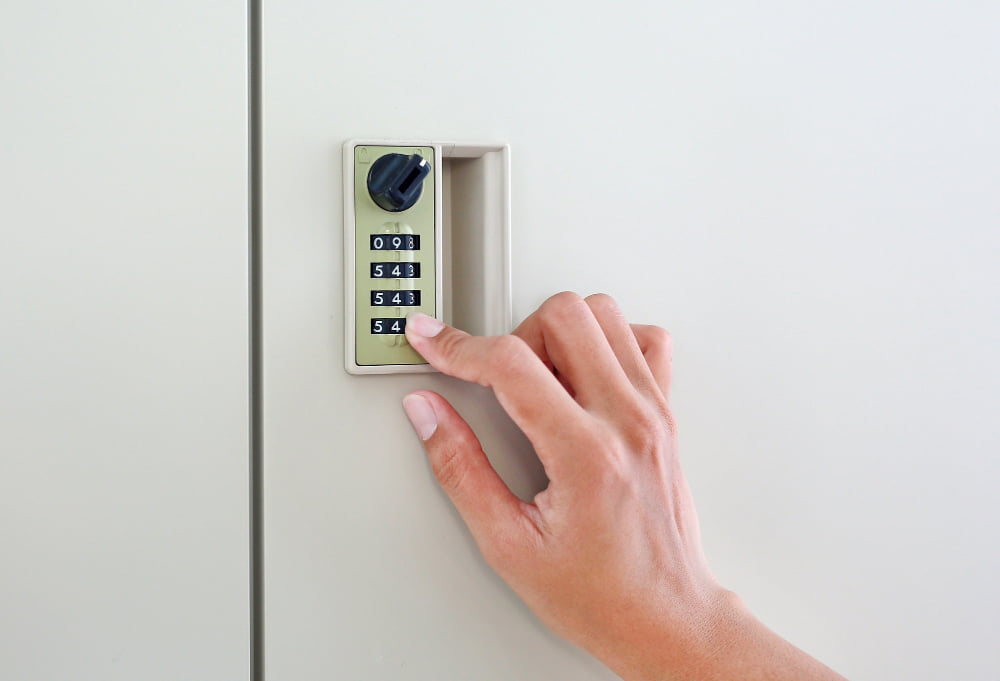
However, integrating security features into your design can provide peace of mind and protect your valuables. One way to do this is by installing a locking mechanism on the door itself or adding a keypad entry system for added protection.
Another option is incorporating an alarm system that will alert you if someone tries to access the hidden space without permission. You can also install motion sensors or cameras in strategic locations around the door for added surveillance.
It’s important to keep in mind that while these security measures are helpful, they should never compromise safety during an emergency situation such as a fire or natural disaster. Always ensure there is easy access and egress from any room with a hidden pantry door.
Maximizing Space With a Hidden Pantry Door
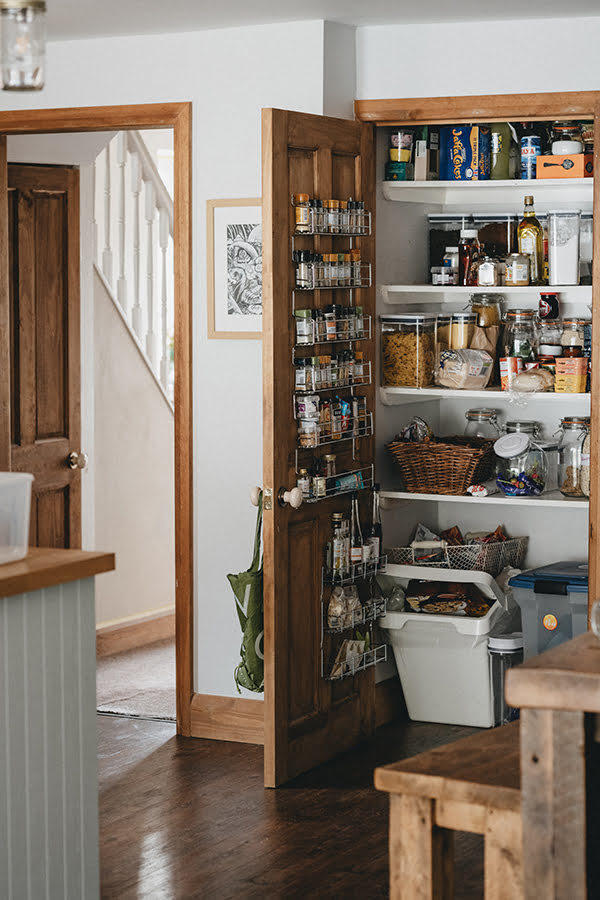
By utilizing the area behind the door, you can create additional storage for food items and kitchen supplies that would otherwise take up valuable counter or cabinet space.
One way to maximize space with a hidden pantry door is by installing shelves on the back of the door. This allows you to store smaller items such as spices, condiments and snacks without taking up any floor or counter space.
You could also install hooks on the back of your hidden pantry door for hanging utensils like measuring cups and spoons.
Another option is to use wire baskets that attach directly onto the inside of your hidden pantry doors. These baskets are perfect for storing fruits and vegetables while keeping them easily accessible when cooking meals.
Budget Considerations for Hidden Pantry Doors

If you’re on a tight budget, don’t worry! There are still ways to incorporate this unique storage solution into your home without breaking the bank.
One option is to DIY your own hidden pantry door using affordable materials such as plywood or MDF. You can also repurpose an existing door by adding hinges and hardware for a fraction of the cost of purchasing one pre-made.
Another way to save money is by opting for simpler designs that require less material and labor. For example, sliding barn-style doors or bookcase-style doors can be more cost-effective than intricate designs with multiple moving parts.
It’s important to keep in mind that while you may be able to save money upfront with DIY or simpler designs, investing in higher-quality materials and professional installation may ultimately save you money in the long run by reducing maintenance costs and increasing durability.
There are many budget-friendly options when it comes to incorporating a hidden pantry door into your home decor.
Customizing Your Hidden Pantry Door
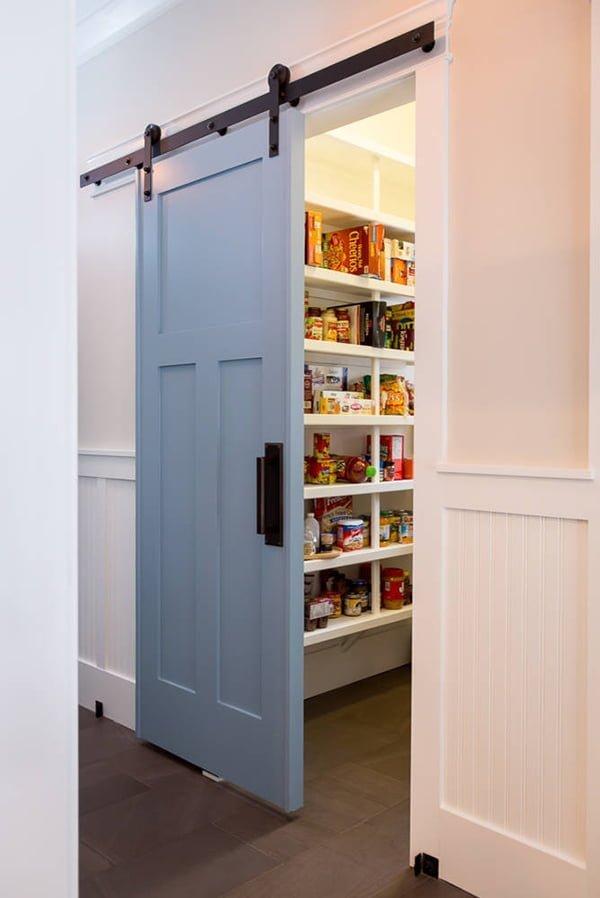
There are many ways you can customize your hidden pantry door, from the material and color selection to adding unique hardware or even incorporating artwork or family photos.
One popular customization option is adding shelving or storage compartments within the hidden door itself. This allows for even more efficient use of space and provides additional storage options for items such as spices, canned goods, and snacks.
Another way to customize your hidden pantry door is by selecting unique hardware that complements the overall design of your kitchen or home. From sleek modern handles to vintage-inspired knobs, there are endless options available that can help make your hidden pantry door truly one-of-a-kind.
If you’re feeling particularly creative, consider incorporating artwork into the design of your hidden pantry door. Whether it’s a painted mural on the exterior surface or framed photographs mounted inside the secret compartment – this will not only add an element of surprise but also showcase some personality in an unexpected place!
Hidden Pantry Door Accessory Ideas
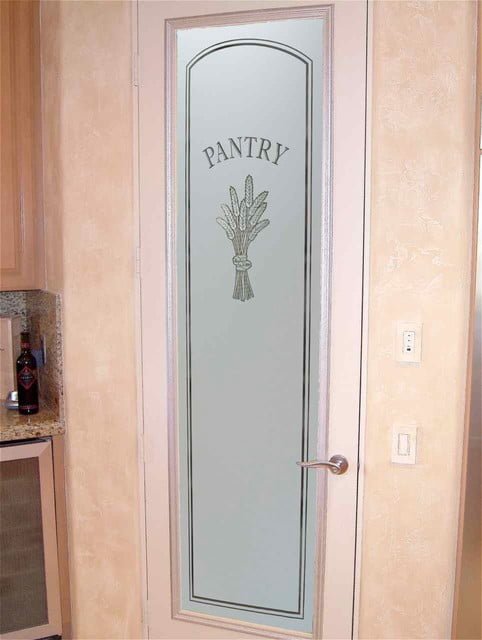
Here are a few ideas to get you started:.
1. Lighting: Add LED strip lights or motion sensor lights inside the pantry for easy visibility.
2. Shelving: Install adjustable shelves or pull-out drawers inside the pantry for better organization.
3. Chalkboard paint: Paint the interior of your hidden pantry door with chalkboard paint so that you can write down grocery lists, recipes, or notes.
4. Mirrors: If your hidden pantry is located in a small space like a hallway, consider adding mirrors on both sides of the door to create an illusion of depth and brightness.
5. Decorative hardware: Choose unique handles or knobs that match your home decor style for added visual appeal.
6. Magnetic strips/boards – Use magnetic strips/boards on one side of the wall adjacent to which Hidden Pantry Door is installed so as soon as someone opens up this secret passage they can see all their important documents/papers stuck there without any hassle.
Safety Considerations for Hidden Pantry Doors
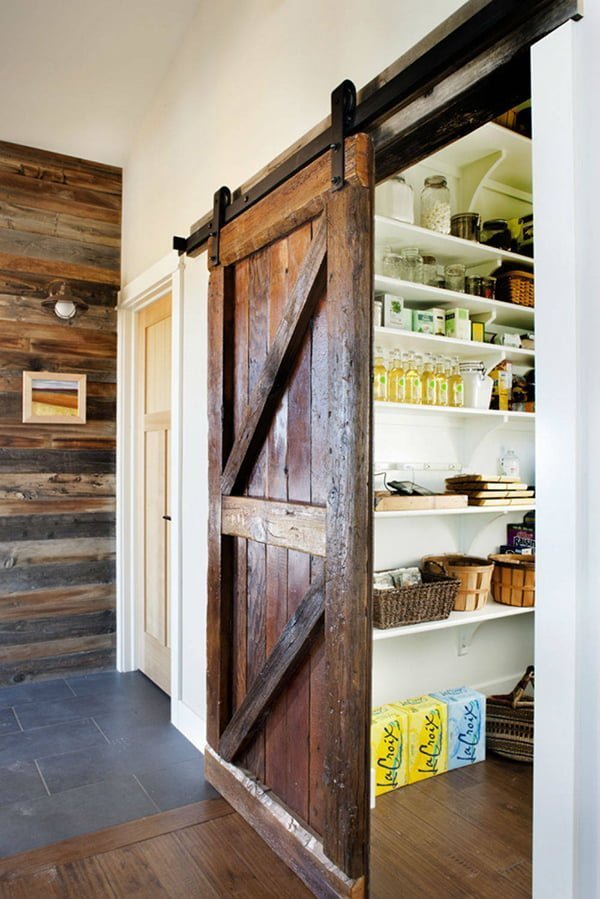
While these doors can add an element of fun and intrigue to your home, they also have the potential to pose a safety risk if not installed or used properly.
One important consideration is ensuring that the door is easy to open from both sides. This means that in case of an emergency, anyone inside the pantry can quickly exit without difficulty.
It’s essential that you choose high-quality hardware for your hidden pantry door so that it doesn’t accidentally swing open or shut on its own.
Another crucial aspect of safety when installing a hidden pantry door is making sure there are no sharp edges or corners on any part of the installation process. You don’t want anyone getting hurt while using this unique storage solution!
Maintenance Tips for Hidden Pantry Doors
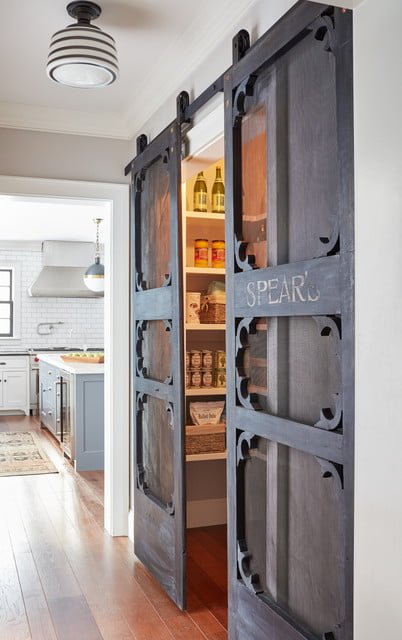
Here are some maintenance tips for keeping your hidden pantry door in top condition:.
1. Regular Cleaning: Dust and debris can accumulate on the surface of the door over time, so make sure to clean it regularly with a soft cloth or duster.
2. Lubrication: The hinges and moving parts of the hidden pantry door should be lubricated periodically with a silicone-based spray or oil.
3. Check for Damage: Inspect your hidden pantry door regularly for any signs of damage such as cracks, warping or peeling paint.
4. Tighten Screws: Loose screws can cause misalignment in the hinges which may affect how well your secret storage solution functions; therefore, check them frequently and tighten if necessary.
Common Hidden Pantry Door Challenges
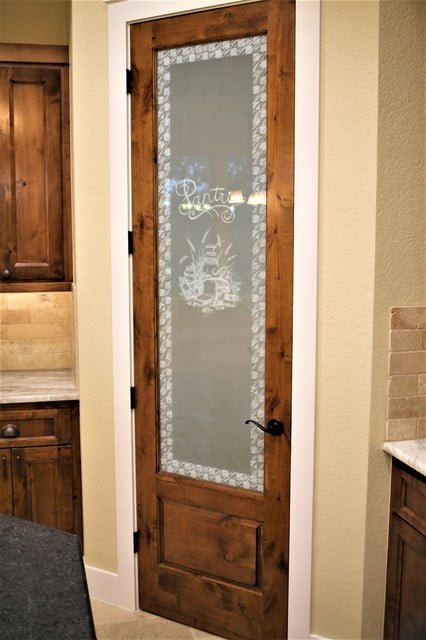
One common issue is ensuring that the door remains concealed when not in use. This can be particularly difficult if you have children or pets who may accidentally reveal the secret entrance.
Another challenge is finding a suitable location for your hidden pantry door. Depending on the layout of your home, it may not always be possible to install one without compromising on space or functionality.
Some homeowners may struggle with choosing between different types of hidden pantry doors and deciding which style best suits their needs and preferences.
Inspirational Hidden Pantry Door Ideas
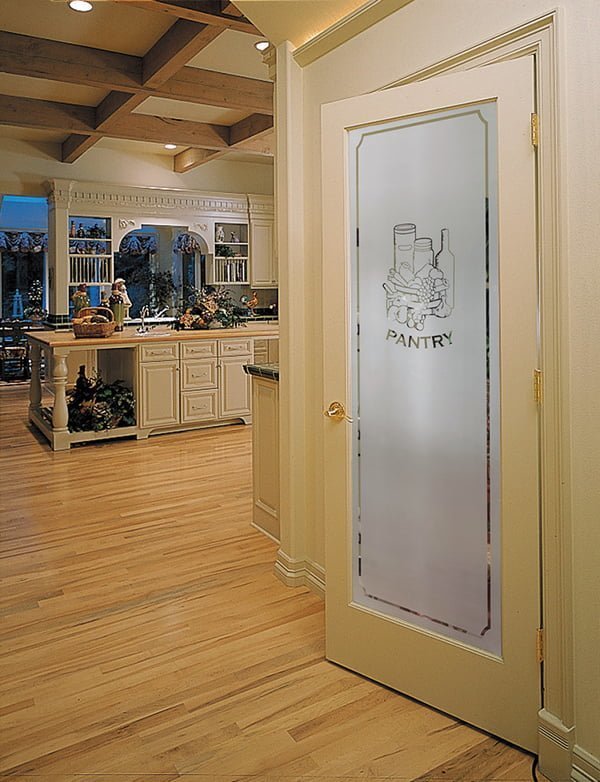
One popular option is a bookcase-style door that blends seamlessly with the surrounding shelves and decor. Another creative idea is a sliding barn door that adds rustic charm while also saving space.
For those who prefer a more modern aesthetic, consider using sleek metal panels or glass doors with frosted designs for added privacy.
You can also get creative with the way you access your hidden pantry by incorporating secret mechanisms such as push-to-open latches or fingerprint scanners. And don’t forget about lighting – adding LED strips or spotlights can highlight the beauty of your new feature while also providing practical illumination.
Whether you choose to go bold and make a statement with an eye-catching design, or opt for something subtle and understated, there’s no limit to what you can achieve when it comes to creating an inspirational hidden pantry door in your home!.
FAQ
How do you make a hidden pantry door?
To make a hidden pantry door, create a hidden entry by fitting a box between the cabinetry and attaching two cabinet doors, one above the other, to a 2-inch-wide wood stiffener.
How wide is a hidden pantry door?
A hidden pantry door typically has a width of 24 inches, with other possible widths being 28, 30, 32, and 36 inches.
What is a pass through pantry?
A pass-through pantry is a kitchen feature that consists of a standard door-height passageway seamlessly integrated into the cabinetry design, providing concealed access to an adjoining pantry, laundry room, or utility closet.
Do butlers pantry have a door?
Yes, butler’s pantries often have a door, allowing for privacy while prepping food and keeping the main kitchen clean for guests.
What are the best materials to use for constructing a hidden pantry door?
The best materials to use for constructing a hidden pantry door are plywood and a sturdy framing material like solid wood or metal, as they provide a discreet appearance, structural strength, and durability.
How can you effectively conceal a hidden pantry door within the existing home design?
To effectively conceal a hidden pantry door within the existing home design, integrate it seamlessly with the surrounding walls or cabinetry, using matching materials, finishes, and decorative elements.
What are some common security features for hidden pantry doors?
Common security features for hidden pantry doors include concealed hinges, magnetic locks, and disguised designs that blend with surrounding decor.
Recap:




